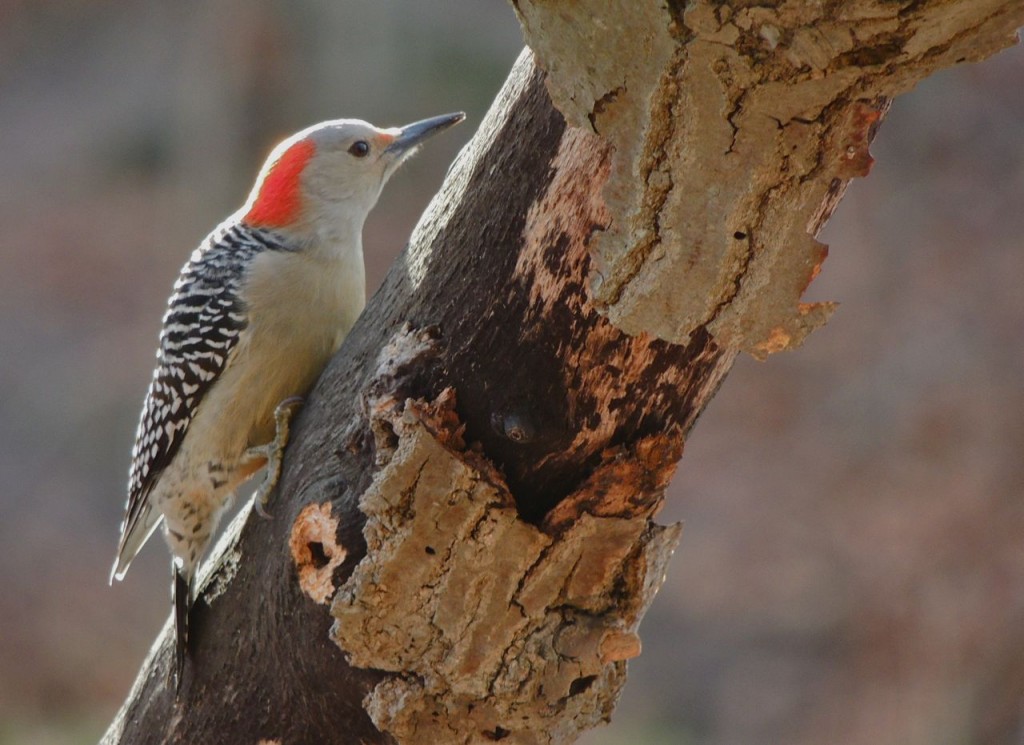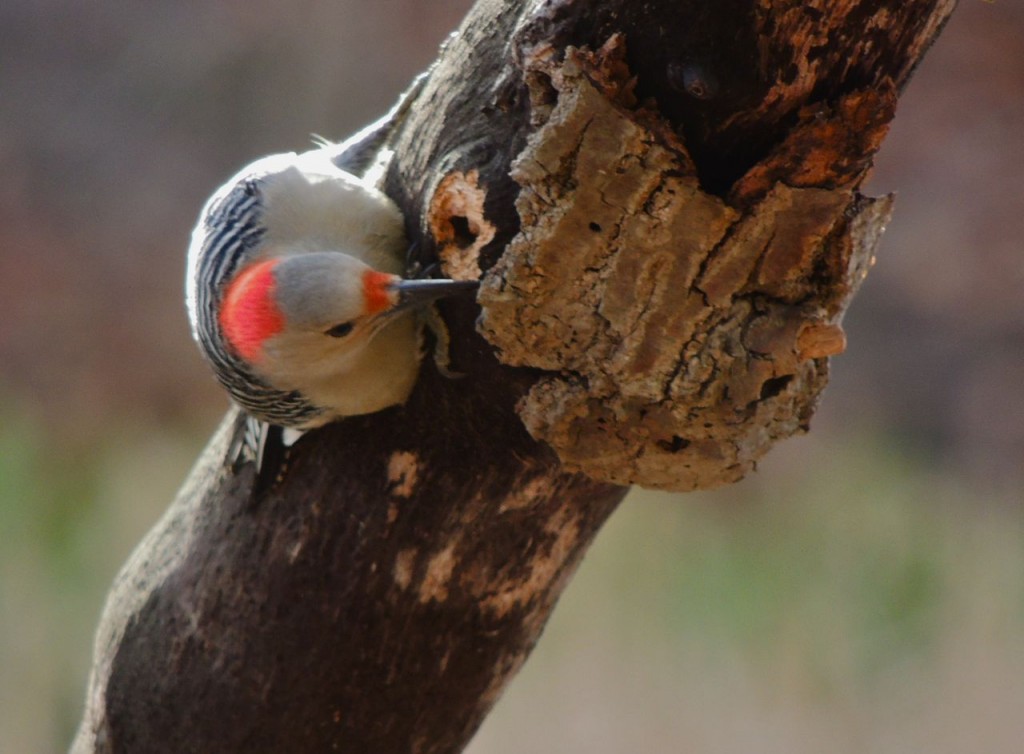15 December 2015. Hendrie Valley, Burlington ON. If this were a normal year, a normal mid-December, we would have at least one of: sub-zero temperatures at night, frozen ground, snow cover, a rime of ice along creeks and rivers and complete ice cover on lakes and ponds; we might even have a Christmas card landscape. But the reality is we have none of that; instead temperatures remain well above freezing, the ground is soft, and daytimes almost invite shirt-sleeve nonchalance. Bizarre it is. I just wish we could have held back the birds of October; instead the trees and the birds affirm that it is winter; leaves gone, birds gone.
I continue my regime of census walks though, and today I was tailed as usual by Black-capped Chickadees and White-breasted Nuthatches, our constant hand-out-seeking companions. It’s hard to count birds that behave this way, my chickadee counts since the start of September vary anywhere from twenty to sixty individuals, more usually in the thirties and forties. What is a person to conclude?
Mallards too, so many of them! I routinely count forty to fifty. This out-of-the-wind valley with its numerous shallow and still unfrozen ponds is a perfect place to while away the time. There is an equal number of males and females, it makes for peace in the kingdom.
Gradually I’m learning to anticipate who’s where. I anticipate American Goldfinches, now all dressed in drab olive, feeding in the seedy tops of Yellow Birch trees. I find a wheeling Red-tailed Hawk usually around a bank of towering White Pines and there’s a dependable pair of Northern Cardinals stationed along the riverbank. I know too where to expect a Hairy or Red-bellied Woodpecker, I usually hear them long before I catch sight of them. Today’s bird of the day was a Red-bellied Woodpecker who was following a couple who were generously handing out peanuts, attracting Blue Jays in particular and hoping for a photo op.
This female Red-bellied Woodpecker came close and allowed a good study of the distinguishing female plumage. On a male the entire crown is scarlet from nape to bill whereas on the female, the scarlet is limited to the nape and nasal tufts, leaving a creamy grey forehead.